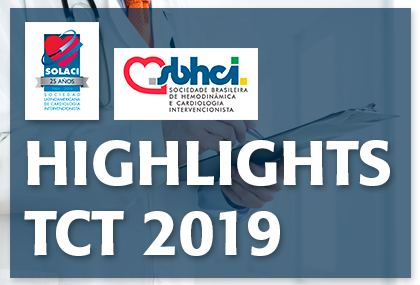Courtesy of SBHCI.
The safety and efficacy of antithrombotic and antiplatelet treatments in patients with atrial fibrillation admitted with acute coronary syndrome (who receive medical treatment or angioplasty) may vary from that in patients undergoing elective treatment.

At 14 days from elective angioplasty or hospitalization due to acute coronary syndrome, patients were randomized in a 2×2 factorial trial to apixaban vs. warfarin and aspirin vs. placebo; additionally, they all received a P2Y12 inhibitor for the first 6 months. Patients admitted due to acute coronary syndrome received angioplasty or medical treatment at the discretion of the treating physician.
Patients randomized to apixaban received 5 mg every/12 h unless they met two of the three risk criteria (age >80 years, weight <60 kg or creatinine 1.5 mg/dL); in that case, the dose was 2.5 mg every/12 h. Patients randomized to warfarin had a target INR between 2 and 3. Both anticoagulant and antiplatelet therapies were started within 24 h from the randomization, and their duration was 6 months.
Events were analyzed according to three possible scenarios: clinically-treated acute coronary syndrome, angioplasty-treated acute coronary syndrome, and elective angioplasty.
Of the 4614 patients included, about 1097 (23.9%) were admitted due to acute coronary syndrome and underwent medical treatment, 1714 (37.3%) were admitted due to acute coronary syndrome and underwent angioplasty, and 1784 (38.8%) underwent elective angioplasty.
Compared with warfarin, apixaban reduced the number of major bleeding events in all clinical scenarios, with the same rate of ischemic events.
Aspirin patients had higher rates of bleeding in all clinical scenarios, with the same rate of ischemic events as placebo patients.
Conclusion
An antithrombotic regime with apixaban plus a P2Y12 inhibitor without aspirin was safer and just as effective in patients with atrial fibrillation admitted with acute coronary syndrome receiving medical treatment or angioplasty when compared with patients who undergo elective angioplasty.
Courtesy of SBHCI.
Link to the SBHCI publication HERE
Original Title: AUGUSTUS ACS: A 2×2 Factorial Randomized Trial of Apixaban vs. Warfarin and Aspirin vs. Placebo in Patients With Atrial Fibrillation and an Acute Coronary Syndrome.
Author of the Original Title: Stephan Windecker.
Get the latest scientific articles on interventional cardiologySubscribe to our weekly newsletter
We are interested in your opinion. Please, leave your comments, thoughts, questions, etc., below. They will be most welcome.





